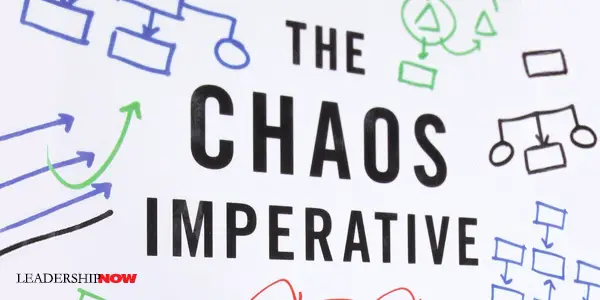 |
 |
12.12.14

The Chaos Imperative
OUR BRAINS need white space to think creatively. We need white space to think more deeply and completely. In The Chaos Imperative, co-authors Ori Brafman and Judah Pollack say that “if we want to foster creativity and innovation in our own lives, we too need a bit of chaos.” We need organization and routines to be sure, but we also need “pockets of chaos”—“places where structure and efficiency are set aside or blocked off to create a more organic process that allows new ideas to come to the fore.” What Brafman calls “organized serendipity.”We could actually use more of this white space not only in our organizations, but in our homes, schools and personal lives as well. In one study, “researchers discovered that the children with more recess time learned more, developed better emotional and cognitive skills, were healthier, behaved better, and managed stress better.” The problem is that it seems counterintuitive to us; like we’re not doing our job; we’re slacking off. But if you, as a teacher, a parent, or a leader think of your job as an opportunity to draw out ideas from others, to listen and to connect, it makes a lot of sense. However, white space is not a shortcut, but a step. Using the stories of Dmitry Mendeleev (created the table of the elements), Gary Starkweather (invented the laser printing), and Albert Einstein (developed the general theory of relativity), the authors write that none of these men could have arrived at the solutions to their problems had they not spent considerable time thinking about the particular problem and mastering their particular field. “But in order to solve the problems they were working on, they needed to create a bit of white space.” Our brains need time to process the information we take in and it is our default mode unless we are focused on a task. We actually interrupt this process when we perform a specific task. “It’s often in those moments when we cede control, when we put down that pen, when we fall asleep, or when we talk offline, that true eureka moments seem to find us.” Introducing chaos into our lives and organizations is inherently messy, so the authors have introduced five rules for managing it: Rule 1: Avoid the Seductive Lure of Data and Measurements. It’s a process. Results will vary. Sometimes you will have more insights and sometimes you won’t have any. Rule 3: Make White Space Productive. Here are a few tips: You first have to put in the work. A slacker won’t necessarily benefit from white space. Get up and move. Get some exercise. Take a walk. Create a micro white space—a minute or two—think before you speak. Rule 4: Embrace Unusual Suspects. Intentionally seek out those with different views and approaches. Different doesn’t mean crazy. Break down silos. Get people from around the organization to contribute. Rule 5: Organize Serendipity. Create openness. Allow people to bump into one another.
Of Related Interest: 
Posted by Michael McKinney at 12:52 AM
|
BUILD YOUR KNOWLEDGE
 

How to Do Your Start-Up Right STRAIGHT TALK FOR START-UPS 
Grow Your Leadership Skills NEW AND UPCOMING LEADERSHIP BOOKS 
Leadership Minute BITE-SIZE CONCEPTS YOU CAN CHEW ON 
Classic Leadership Books BOOKS TO READ BEFORE YOU LEAD |